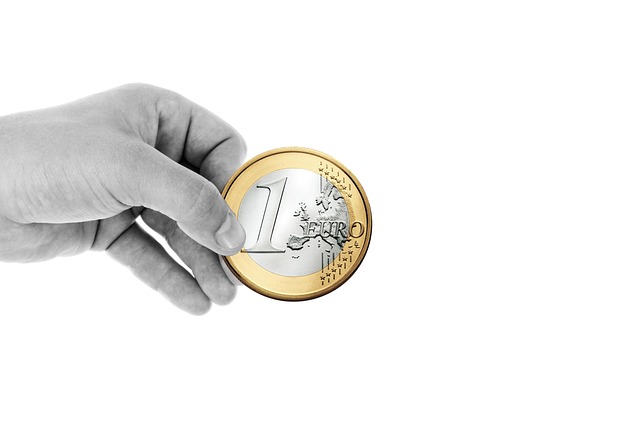In the crowded space of online learning, a well‑crafted webinar graphic can be the first touchpoint that turns a potential learner into a committed participant. These visuals serve as the digital storefront of an educational experience, communicating not only the subject matter but also the tone, authority, and accessibility of the content that follows. As the demand for high‑quality, engaging webinars grows, educators and instructional designers are investing more time in the visual language that frames each session.
The Role of Design in Knowledge Building
Knowledge building is a dynamic process that depends on clear communication, contextual cues, and emotional resonance. A webinar graphic performs three critical functions: it attracts attention, establishes credibility, and sets expectations for the learning journey. By aligning the graphic with the educational goals, facilitators can prime learners for deeper engagement.
- Attract Attention – A striking visual with concise messaging cuts through digital noise.
- Establish Credibility – Consistent branding and professional aesthetics signal expertise.
- Set Expectations – Visual cues about format, length, and interactive elements prepare participants mentally.
Visual Storytelling: From Theme to Detail
Every webinar graphic tells a story before the first slide is presented. Designers weave thematic elements—color palettes, typography, and imagery—into a cohesive narrative that mirrors the course content. This storytelling extends beyond aesthetics; it influences the learner’s emotional response and readiness to absorb new concepts.
“The most memorable learning experiences begin with a visual promise that the content will deliver.” – Dr. Elena M. Santos, Learning Design Researcher
Key Design Principles for Educational Webinars
While creativity is essential, structure anchors the graphic’s effectiveness. The following principles ensure that the design supports learning objectives rather than distracting from them.
- Clarity Over Complexity – Use legible fonts and avoid overcrowding. The headline should convey the main idea in a single line.
- Hierarchy of Information – Arrange elements so that the eye naturally flows from title to subtitle to essential details like date, time, and speaker.
- Contrast and Readability – High contrast between background and text improves comprehension, especially on mobile devices.
- Brand Consistency – Maintain consistent colors, logos, and style guidelines across all webinars to reinforce institutional identity.
- Accessibility Compliance – Include sufficient color contrast, alt text in exported PDFs, and consider screen‑reader compatibility when distributing the graphic as part of a registration packet.
Audience Analysis: Tailoring Graphics to Learner Personas
Designers often default to generic templates, but effective webinar graphics speak directly to the target audience. By understanding learner personas—age, prior knowledge, learning preferences—designers can choose visual metaphors and layouts that resonate.
- Professional Development Attendees – Use sleek, corporate typography and muted color schemes that reflect industry standards.
- University Students – Vibrant colors and dynamic compositions can appeal to a younger demographic seeking interactive content.
- Adult Learners with Multiple Responsibilities – Highlight concise time commitments and flexible access options to address concerns about scheduling.
Color Psychology in Educational Graphics
Color not only attracts attention; it can influence cognition and mood. Research suggests that blue promotes trust and calm, green signals growth, while orange and yellow stimulate enthusiasm. By combining these hues strategically, designers can subtly guide learner emotions in line with the webinar’s objectives.
Toolsets for Crafting Impactful Webinar Graphics
While professional graphic designers bring deep expertise, many educators use accessible tools that empower quick yet polished creations. Popular choices include:
- Adobe Illustrator and Photoshop – Ideal for high‑resolution, custom illustrations.
- Canva Pro – Offers pre‑made templates, brand kits, and an intuitive drag‑and‑drop interface.
- Figma – Supports collaborative editing, which is useful for teams coordinating across departments.
- Microsoft PowerPoint – Though traditionally a presentation tool, its robust design features can produce effective standalone graphics.
Regardless of the platform, designers should export graphics in web‑optimized formats (e.g., PNG or compressed JPEG) to ensure fast load times during registration and promotion.
Measuring Success: How Graphics Influence Engagement Metrics
To justify investment in high‑quality webinar graphics, institutions need to connect visual design with measurable outcomes. Key metrics include:
- Registration Rate – Higher click‑through rates on promotional emails often correlate with visually compelling graphics.
- Attendance Ratio – A compelling graphic that promises clear benefits can reduce no‑show rates.
- Post‑Webinar Feedback – Learners frequently reference the first impression of the webinar, which is largely shaped by the graphic.
- Engagement during the Session – When participants start with a strong visual cue, they tend to be more attentive to subsequent content.
Iterative Design: Testing and Refinement
By conducting split tests on different graphic variants—changing color schemes, headlines, or layout designers can identify which elements drive higher registration or attendance. Even simple A/B experiments with subject lines paired with specific graphics can yield actionable insights.
Future Trends: Emerging Visual Practices in Webinar Design
The webinar landscape evolves rapidly, and design practices must adapt. Emerging trends that educators should monitor include:
- Interactive Graphics – Incorporating subtle animations or hover effects in landing pages can capture attention without overwhelming the learner.
- Personalized Visuals – Using data to customize graphics based on prior engagement or learner profile enhances relevance.
- Inclusive Design Elements – Beyond color contrast, including icons that represent diverse learning styles can improve accessibility.
- Micro‑Learning Visuals – Short, digestible graphic snippets that preview key concepts can boost pre‑webinar excitement.
Adopting these practices early positions institutions as leaders in delivering engaging, learner‑centered online education.
Conclusion: The Strategic Value of a Well‑Designed Webinar Graphic
In the realm of online education, a webinar graphic is more than a decorative element; it is a strategic tool that influences every stage of the learner journey—from initial awareness to post‑session reflection. By grounding design in clear principles, audience insights, and measurable goals, educators can craft visuals that do more than look good—they unlock the full potential of their knowledge‑building content.




